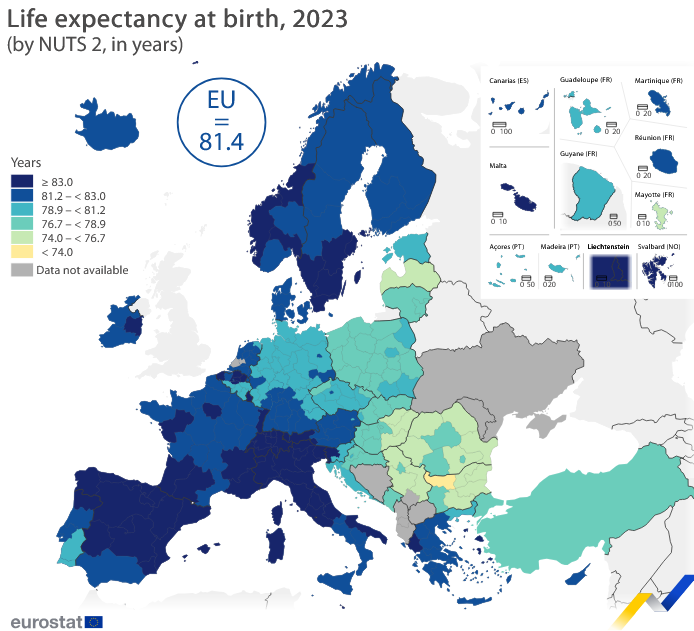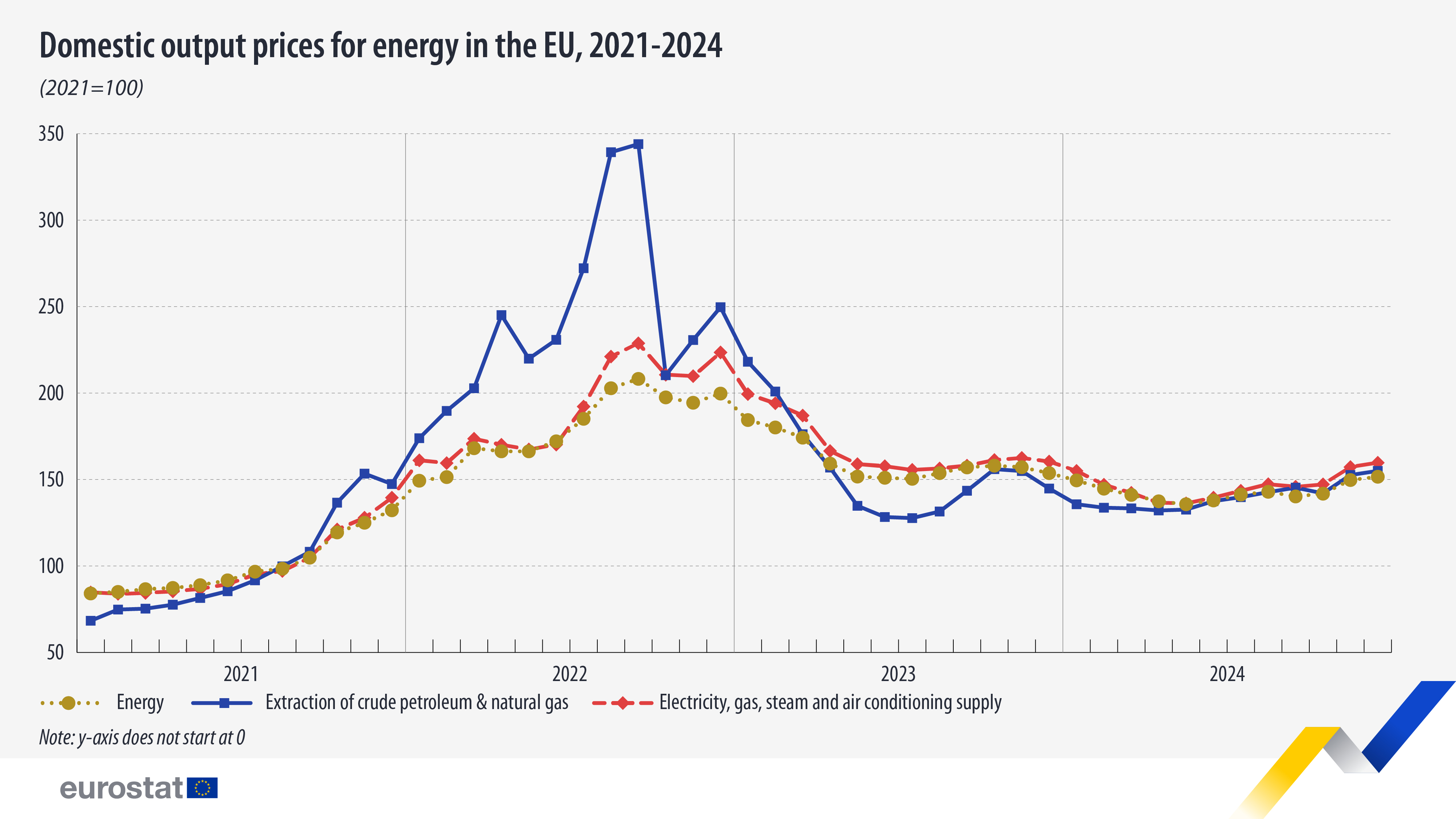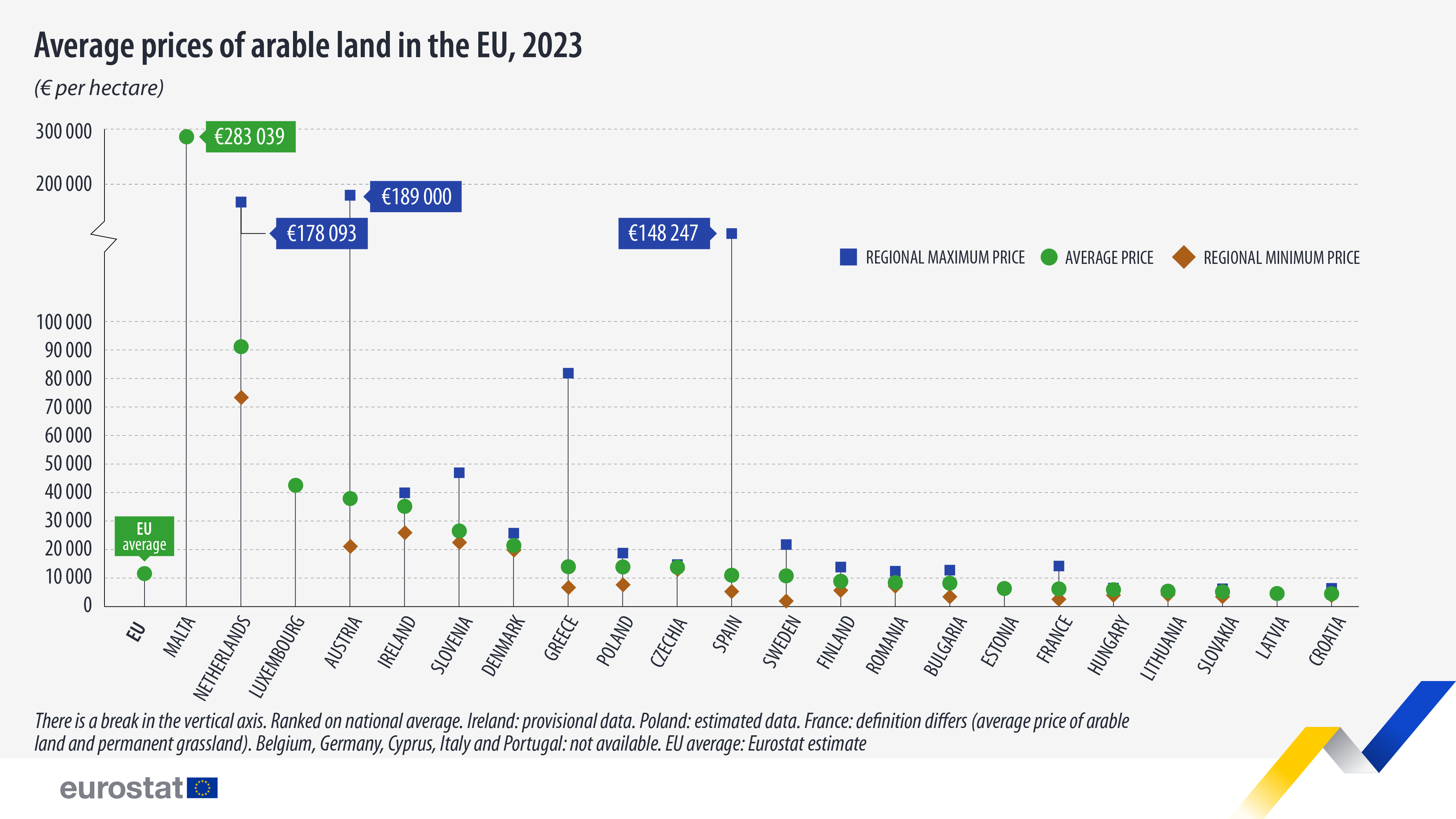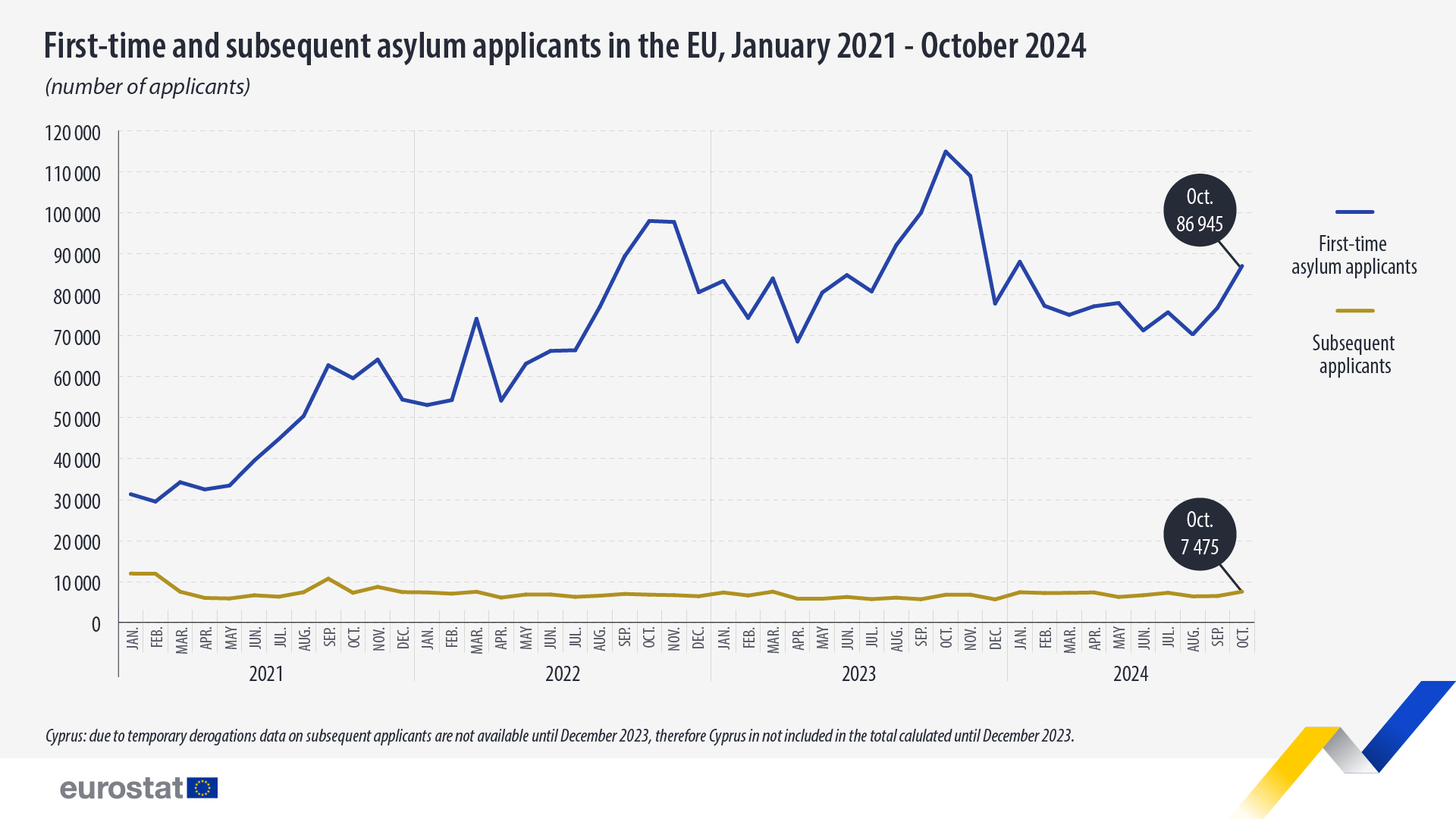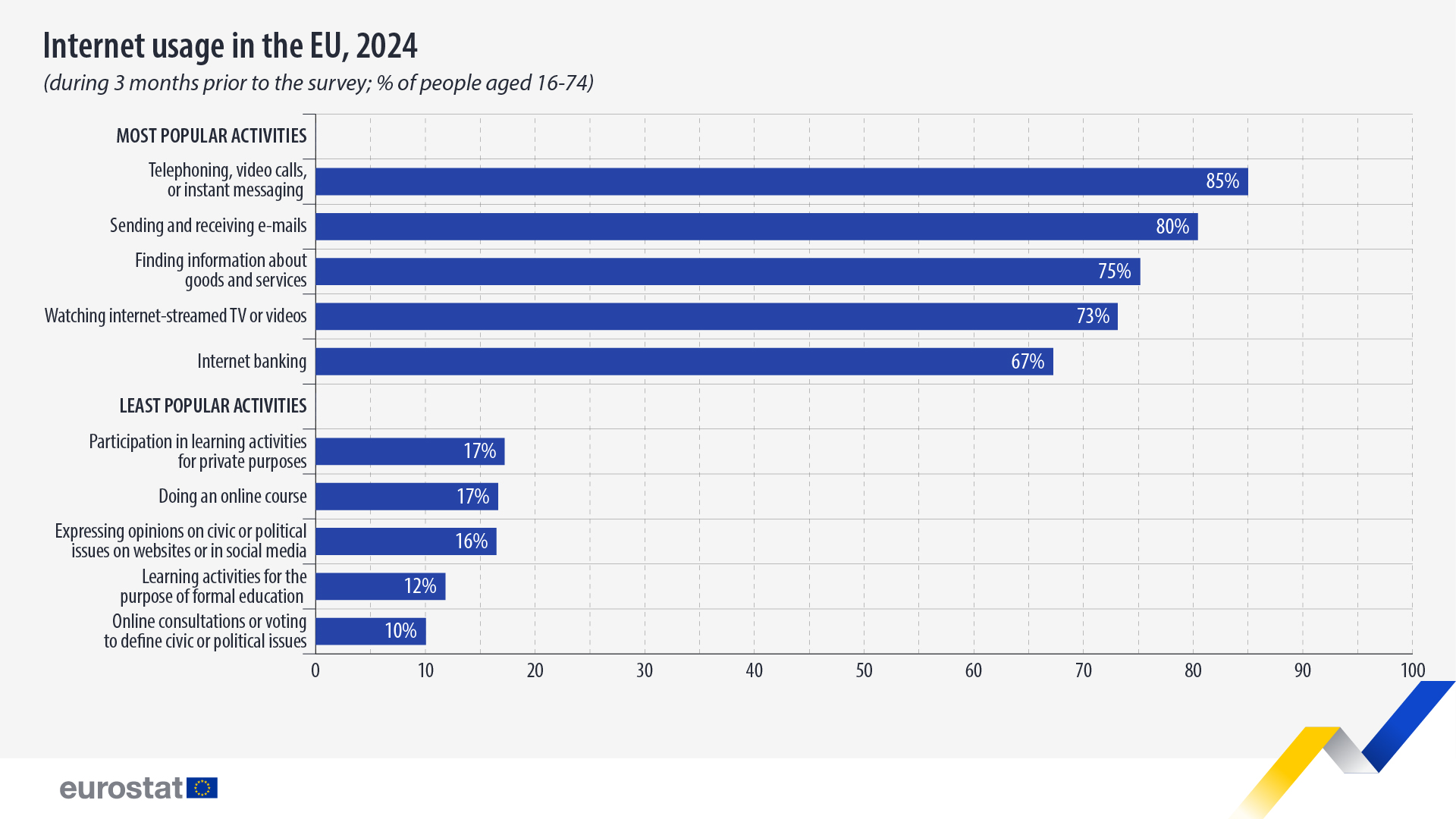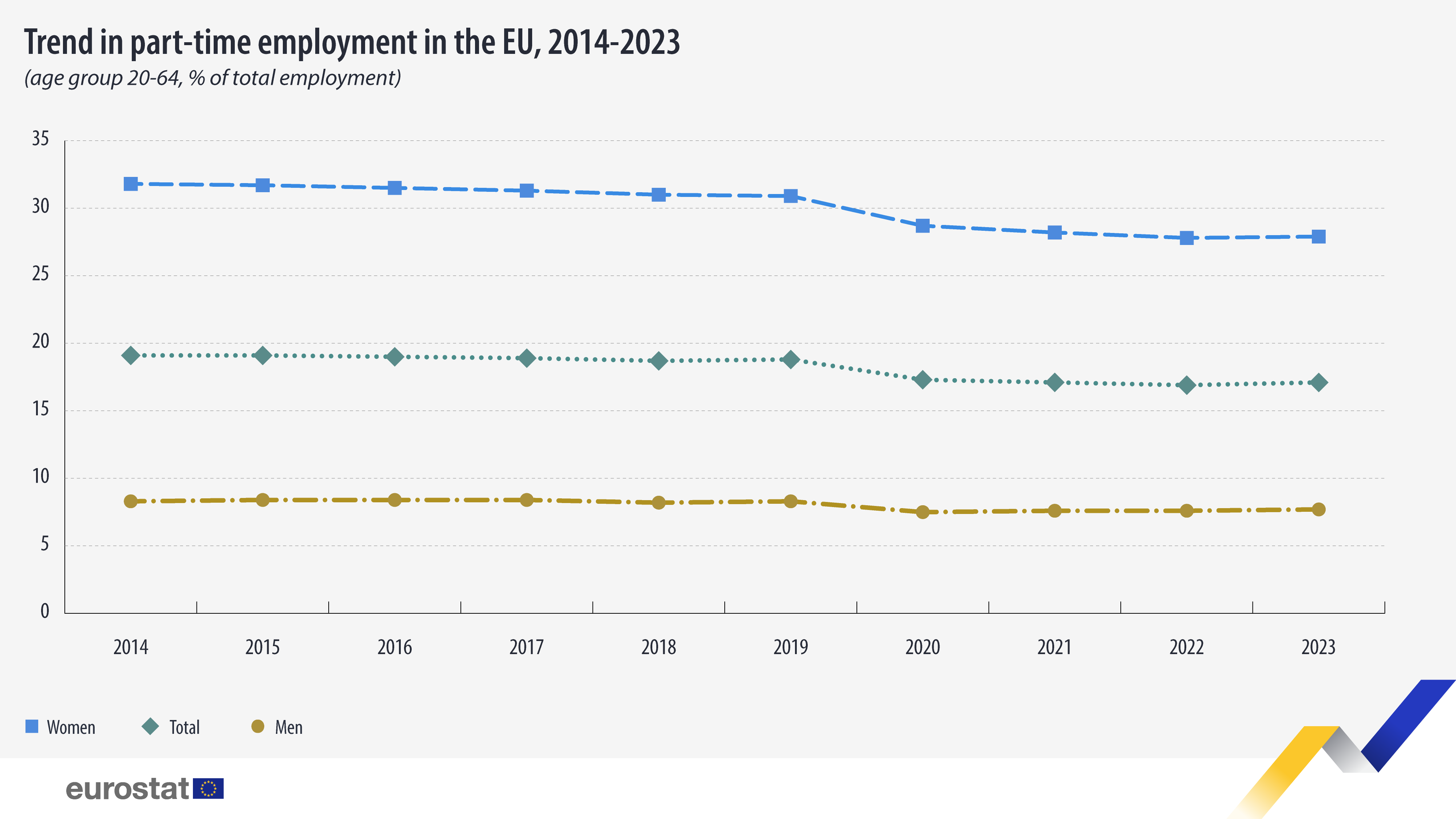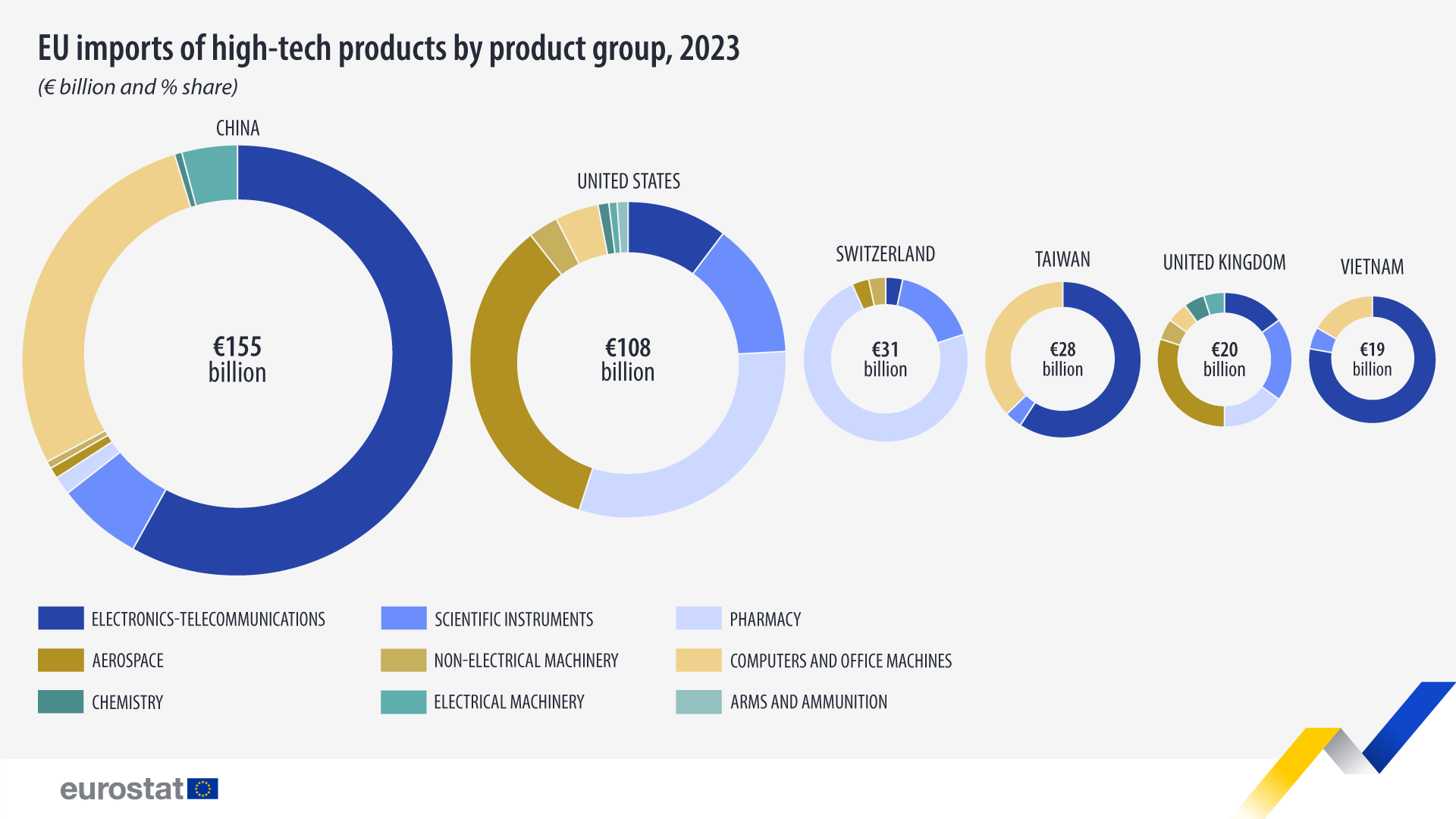In 2023, life expectancy at birth in the EU was 81.4 years, marking an increase of 0.8 years from 2022.
Statistics
In January 2025, the euro area seasonally-adjusted unemployment rate was 6.2%, stable compared with December 2024 and down from 6.5% in January 2024.
In December 2024, the domestic producer price for energy in the EU increased by 1.3% compared with the previous month, while it decreased by 1.4% compared with December 2023.
In 2023, the average price of 1 hectare of arable land in the EU was €11 791, while the average annual rental price of arable land and or permanent grassland stood at €173 per hectare.
In October 2024, 86 945 first-time asylum applicants (non-EU citizens) applied for international protection in EU countries, a 24% decrease compared with October 2023 (114 890).
In 2024, 93% of people aged 16-74 in the EU reported that they had used the internet during the previous 3 months.
In 2023, 25.7% of young Europeans (aged 15-29) were employed during formal education.
In 2023, the share of part-time employees aged 20-64 in the EU was 17.1%, a slight increase from 16.9% in 2022.
In 2022, the European Union (EU) had 32.3 million enterprises, employing 160 million persons. Of that total, 99% were micro and small enterprises employing up to 49 persons.
